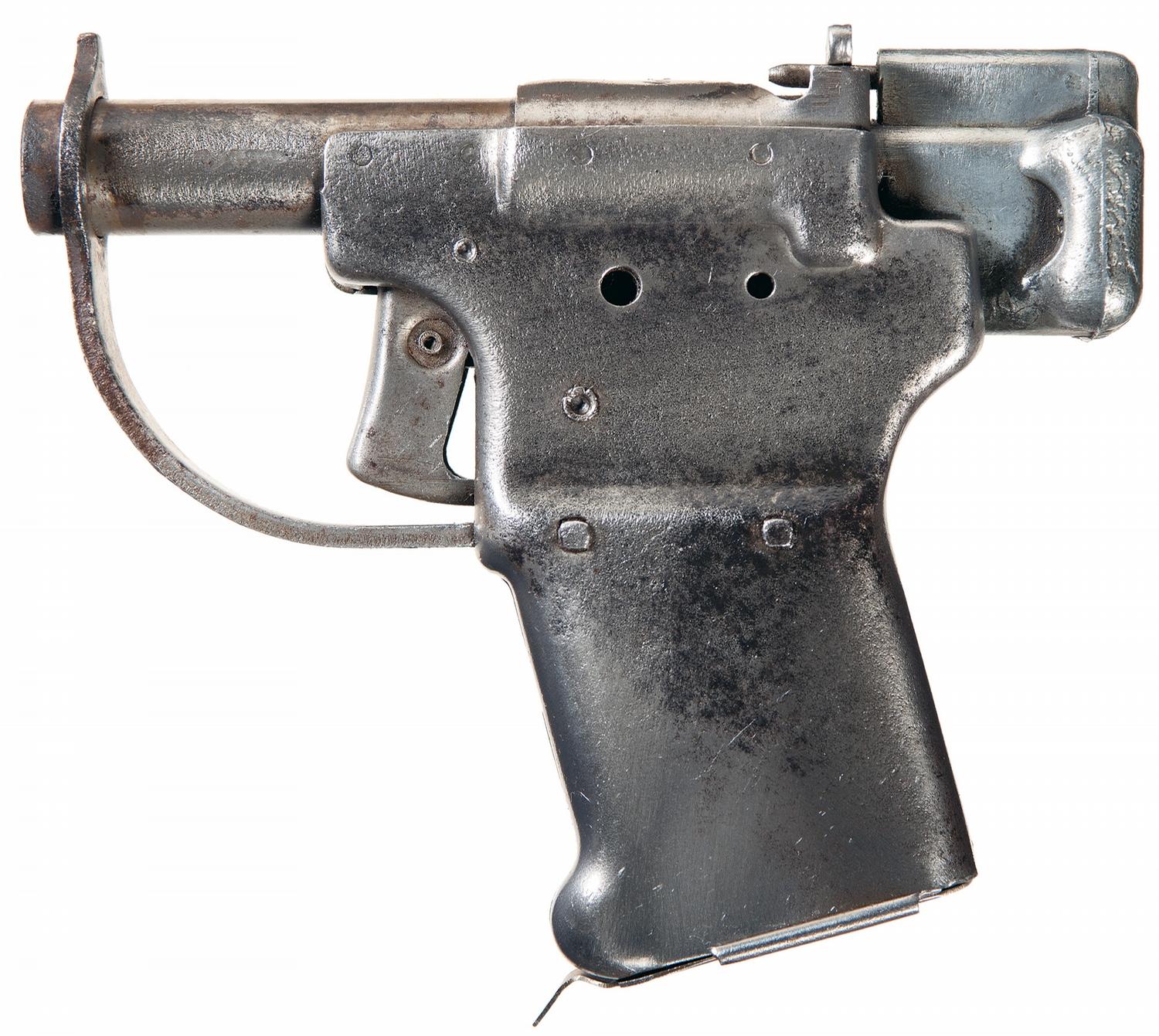The Liberator pistol has to rank as one of the most unusual firearms ever designed. First conceived as a way to equip resistance forces in World War II, today most reside behind glass at museums or in the hands of collectors. Fame ultimately escaped it, but it’s safe to say it served its purpose despite no records existing of it ever being used, mainly because the recipients were too busy moving, or fighting to stay alive.
Its concept began in March 1942, when a Polish military attaché suggested a simple, effective pistol that could be mass-produced and air -dropped by the hundreds or thousands to waiting insurgents. The thought was that so many weapons delivered at once could instantly arm practically everybody in a local guerrilla group. Plus, it would do wonders for morale if everybody carried a weapon, and it would have a detrimental effect on occupying troops who might be led to believe that there was now a way for populations to massively resist them.
The U.S. Army’s Joint Psychological Warfare Committee accepted the proposal, and two months later George Hyde of General Motors Inland Manufacturing Division produced a design that met the specifications. To ensure its secrecy, it was given the designation Flare Projector-45 to conceal its real function.
GM’s Guide Lamp division was assigned the contract, and in 11 weeks with 300 workers, they assembled a million guns. Those who looked at the contraption had to imagine these were some sort of last-ditch device intended for one time use. They were right.
Intended for people who may not be familiar with firearms, the Liberator was simplicity in itself. Of 45 caliber, 5.5 inches long and weighing one pound, it featured 23 stamped steel parts for a total cost of $2.40 per gun. Five rounds could be stored in the grip, which did not feed into the barrel. To do this, one manually inserted a .45 caliber cartridge at the rear, and then the chamber was hand-closed by a metal part. The round was then shot down a 4-inch, unrifled barrel for an effective range of 25 feet. To clear the empty case, a wooden dowel was supplied to push it out the back and another round could be loaded.
In reality, the range was wishful thinking. This gun was intended to be placed against a person to be killed so their weapon could be taken. It could then be discarded, passed on or saved for a final stand.

Liberators were packed in boxes that included 10 rounds of .45 ammunition, the wooded dowel and a comic strip type instruction sheet. A million shipped off to both Great Britain and the Pacific, where they were stored and ready to be loaded into containers on aircraft. There they met their greatest obstacles, the General Staffs of the United States Army.
In Europe, Eisenhower’s men saw no practical purpose for the gun and only 25,000 were dropped to the French resistance. In the Pacific, Macarthur was also sour about the idea and the Army ended up turning the remaining lot over to the Office of Strategic Service to be dropped in both theaters when necessary.

Small drops commenced in 1943 over Europe, while that same year 100,000 ended up being sent to China and smaller numbers dropped in the Philippines. In 1944, another European drop occurred in Greece to supply a few thousand to the resistance. By this time, it had a nickname derived from its cheap looks: The ‘Woolworth’ Gun.
How many were actually used will never be known, but it is safe to say some Axis soldiers met their end with the Liberator, as well as having their weapon stolen. There was never an attempt to round them up after the war, figuring most had been thrown away by then. Those that remained, the still hundreds of thousands of unused copies in warehouses, were melted down. Today, the Liberator is written about sparingly as its success is unknown. Its new life is that of a collectible, with excellent specimens in original box complete with accessories fetching up to $2,000 or more.
